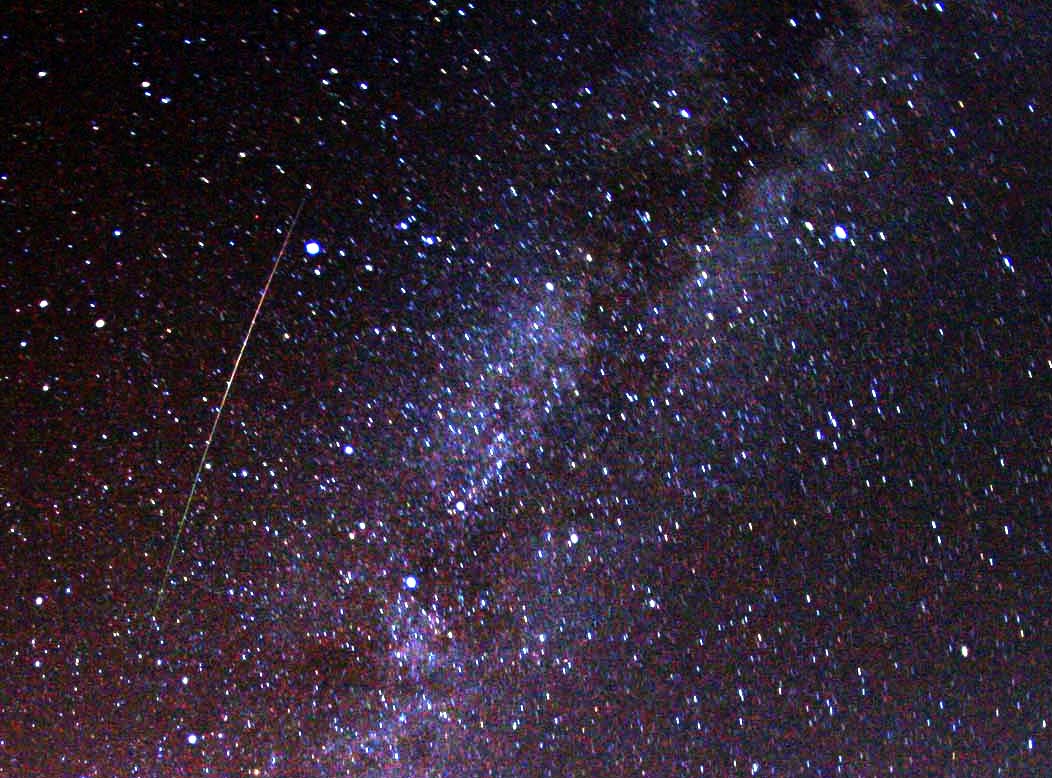by Dr. Monica Young
- Published: Sunday, April 27 2014 08:00
I received my first pair of glasses in second grade, and I remember looking up one night to see the stars for the very first time. I wondered, have those always been there?
Many people have stories about how they first came to love astronomy, and fortunately that was just the first of several for me. Fast forward a year or two and I was watching the Perseids rain down in dark, northern-Minnesota skies. Some time later Comet Shoemaker-Levy 9 smacked into Jupiter, an event that made front-page news worldwide. Later still I would watch Comet Hale-Bopp blaze in the evening skies during my high school years.
 Jupiter showing Comet Shoemaker-Levy 9 impact sites
Jupiter showing Comet Shoemaker-Levy 9 impact sites
Oddly enough, none of these events in particular inspired me to study astronomy in college, nor did they lead me to earn my Ph.D. in the study of quasars, the gorging supermassive black holes nested in distant galaxies. I enjoyed studying astronomy less because of my earthly experiences, and more because of my love of physics and its ability to tell us about faraway things that we may never see with our own eyes (or the eyes of our telescopes).
Nevertheless those early memories filled me with wonder at the universe and what it is capable of. I am far from alone in this — nearly everyone has an astronomical memory, many when they were quite young, that helped shape their view of the cosmos. I hear these recollections not just as an editor for Sky & Telescope magazine, but also in everyday life, in conversation with friends and family, and even in a recent article in Yoga Journal.
 Perseid meteor and Milky Way in 2009
Perseid meteor and Milky Way in 2009
My first thought when I hear these stories is that this is exactly why we need to defend dark skies, a topic covered eloquently by Scott Kardel in his recent blog post, and a subject that Sky & Telescope discusses on a regular basis.
In addition to the basics — making sure the stars remain visible to future generations — Sky & Telescope’s mission is to support the individuals and communities that enjoy the night sky and share their joy with others. The print magazine remains central to our goal — even as web editor, I keep my hand in by editing a feature article every month.
Our newly launched website is another platform where we reach a varied audience, including everyone from complete newbies to astronomy educators. Planetarium directors have told me they visit regularly to read Alan MacRobert’s “This Week’s Sky at a Glance,” as well as our other observing articles, to learn the best celestial sights for public telescope night or astronomy labs. And professors have told me that our astronomy news articles have explained key concepts to their classes.
We’re looking to expand on our mission by creating online classes for the interested amateur. S&T imaging editor Sean Walker has already created several astrophotography tutorials that remain in high demand. And you can look for new online classes in the months ahead, including videos that cover the basics of choosing and using your telescope.
We’re always interested in learning the needs of our readers, particularly those who are spreading the love of astronomy in their communities. If you have ideas for online classes or other tools that could be useful to astronomy education, send an email our way to [email protected].
###
 Dr. Monica Young, web editor of Sky & Telescope, earned her Ph.D. researching the behavior of supermassive black holes in distant galaxies. She left the academic world for her dream job at Sky & Telescope, where she edits, writes, and commissions web news stories and magazine feature articles. She and parent company F+W Media’s digital and web development teams just completed a massive overhaul to the Sky &Telescope website — see the new design at www.skyandtelescope.com.
Dr. Monica Young, web editor of Sky & Telescope, earned her Ph.D. researching the behavior of supermassive black holes in distant galaxies. She left the academic world for her dream job at Sky & Telescope, where she edits, writes, and commissions web news stories and magazine feature articles. She and parent company F+W Media’s digital and web development teams just completed a massive overhaul to the Sky &Telescope website — see the new design at www.skyandtelescope.com.








Comments